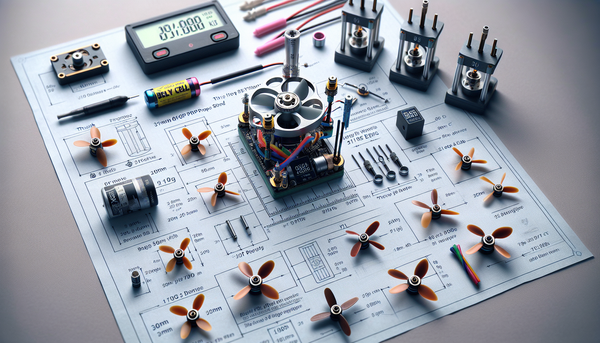Chris Rossers recent video goes deep, into comparing than forty Tiny Whoop motors to find the best performing and most energy efficient choices for fans of the hobbyist community. He highlights motors from brands such, as BetaFPDcouvNewbie Dronevfci and Webleed FPvmtlvalong with testing findings that can assist users in making well informed choices for their 65mm Whoops.
Understanding Motor KV Ratings
The conversation starts with the significance of motor KV ratings that show how revolutions, per minute (RPM) a motor can reach per volt it receives in power supply terms. Chris describes his process for calculating KV by operating the motor at speed and noting down the RPM and voltage readings. He draws attention to differences between the stated and actual KV values by emphasizing that while certain motors such as the Tiny Whoop Moon Travellers provide ratings others like the Webleed FPX Skirt may fall short by, up to 15%.
Weight Matters
Chris then stresses the importance of weight, in motor performance by employing a jewelers scale for measurements.He points out that even a slight variation, in weight can affect performance because of the combined weight of motors.The lightest motor examined is the Newbie Drone Hummingbird Race Spec that incorporates design methods to reduce weight.
Power and Performance Testing
During the performance evaluations Chris tests the motors at speed using a lithium ion battery and the HQ ultralight 31mm tri blade propeller that has been known to work well for Tiny Whoops in the past. The findings reveal that RCinPower motors excel in terms of performance suggesting that even compact motors can rival ones effectively.
Efficiency Analysis
Efficiency is also a point that was talked about by Chris in the discussion of motors performance levels, under a power input setting shows that motors with lower KV ratings tend to perform better than those with higher KV ratings in terms of efficiency which holds particular significance for racers who value longevity of battery life more, than raw power output.
Responsiveness
The ability of motors to respond quickly is important, for maneuvering according to Chriss explanation, on responsiveness being influenced by the acceleration and deceleration speed of the propeller by the motor itself. He highlights that slimmer and taller motors typically offer improved responsiveness as opposed to shorter models that often have greater moment inertia.
Top Five Tiny Whoop Motors
Chris completes his data analysis. Then shares his list of the five engines he has gathered.
- Tiny Whoop Moon Travellers 0702 32,000 KV - Notable for its efficiency, weight, and overall performance with a normalized score of 113.3%.
- RCInPower Power 0702 29,000 KV - Excellent responsiveness and thrust, but less efficient, scoring 114.8% overall.
- WeBleed FPV Skirt 0702 40,000 KV - A lightweight motor with solid performance and efficiency, achieving a score of 115.6%.
- Beta FPV 0702 30,000 KV - Strong performance across the board with a score of 117.0%, though on the heavier side.
- Newbie Drone Hummingbird Race Spec 0702 30,000 KV - The lightest motor at 1.29 grams, it balances responsiveness and efficiency, scoring 117.4% overall.

FAQ
- What is the importance of KV rating in Tiny Whoop motors?
KV rating determines the RPM a motor can achieve per volt, affecting overall performance. - Why is weight significant in motor selection?
Lower weight in motors contributes to better flight performance and efficiency, particularly in small drones. - What factors contribute to motor efficiency?
Efficiency is influenced by the motor's design, KV rating, and the propeller used. - How does responsiveness affect flight performance?
More responsive motors allow for quicker changes in thrust, improving maneuverability and control.
For more detailed data and insights, check out Chris Rosser's full video and his resources on YouTube.







